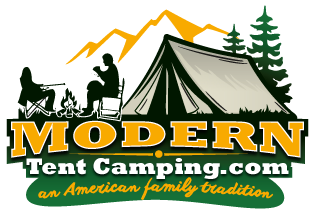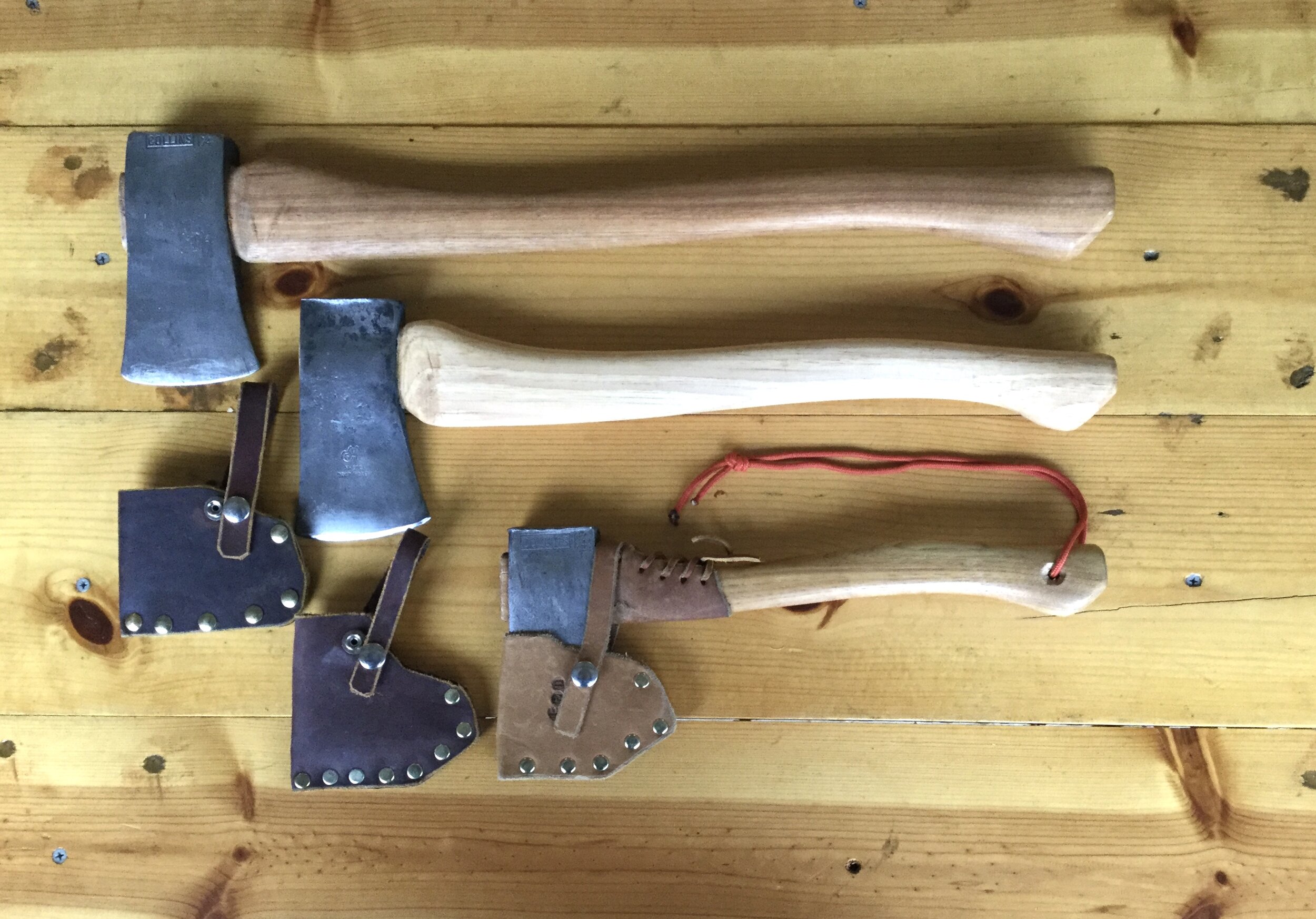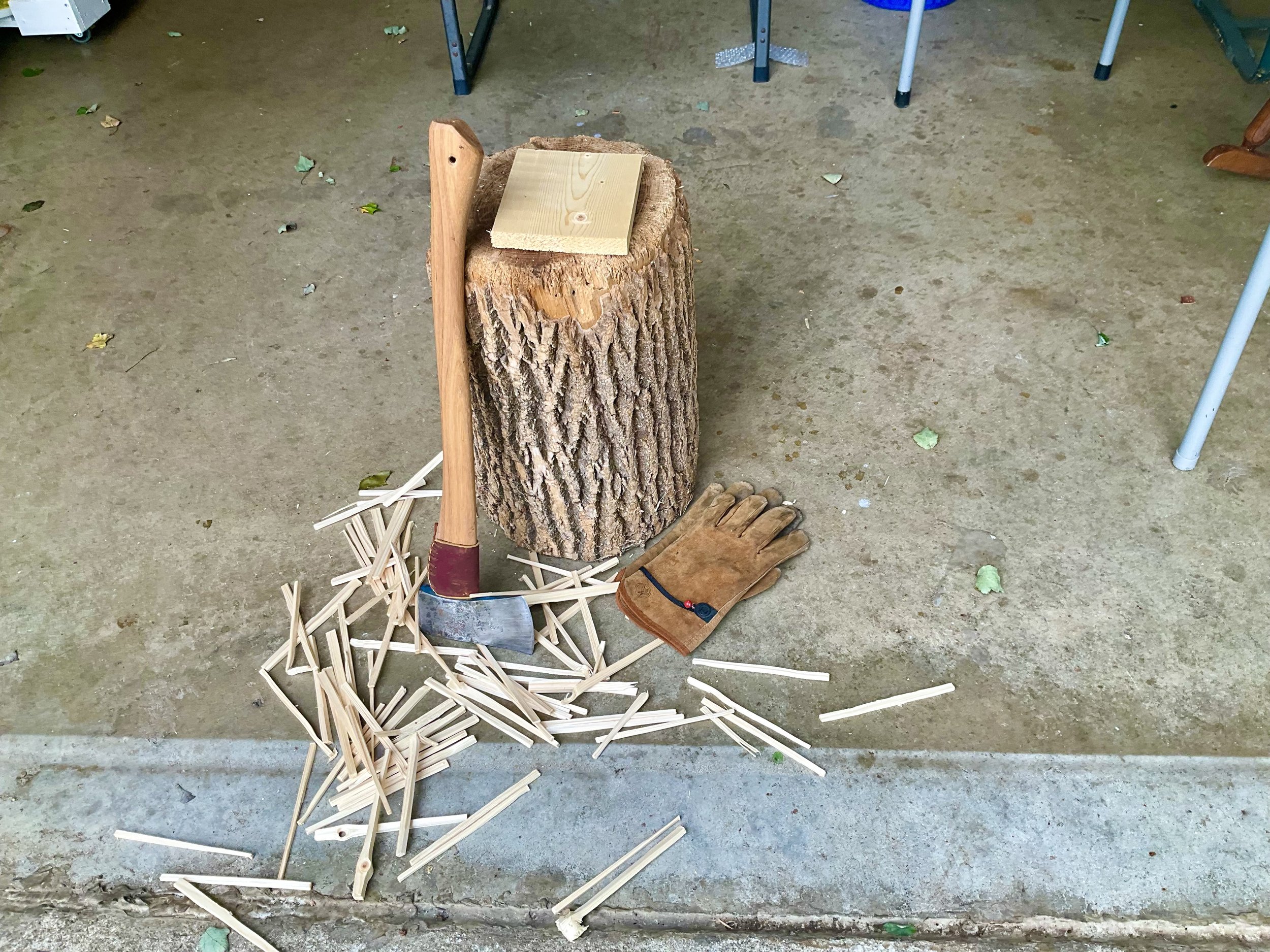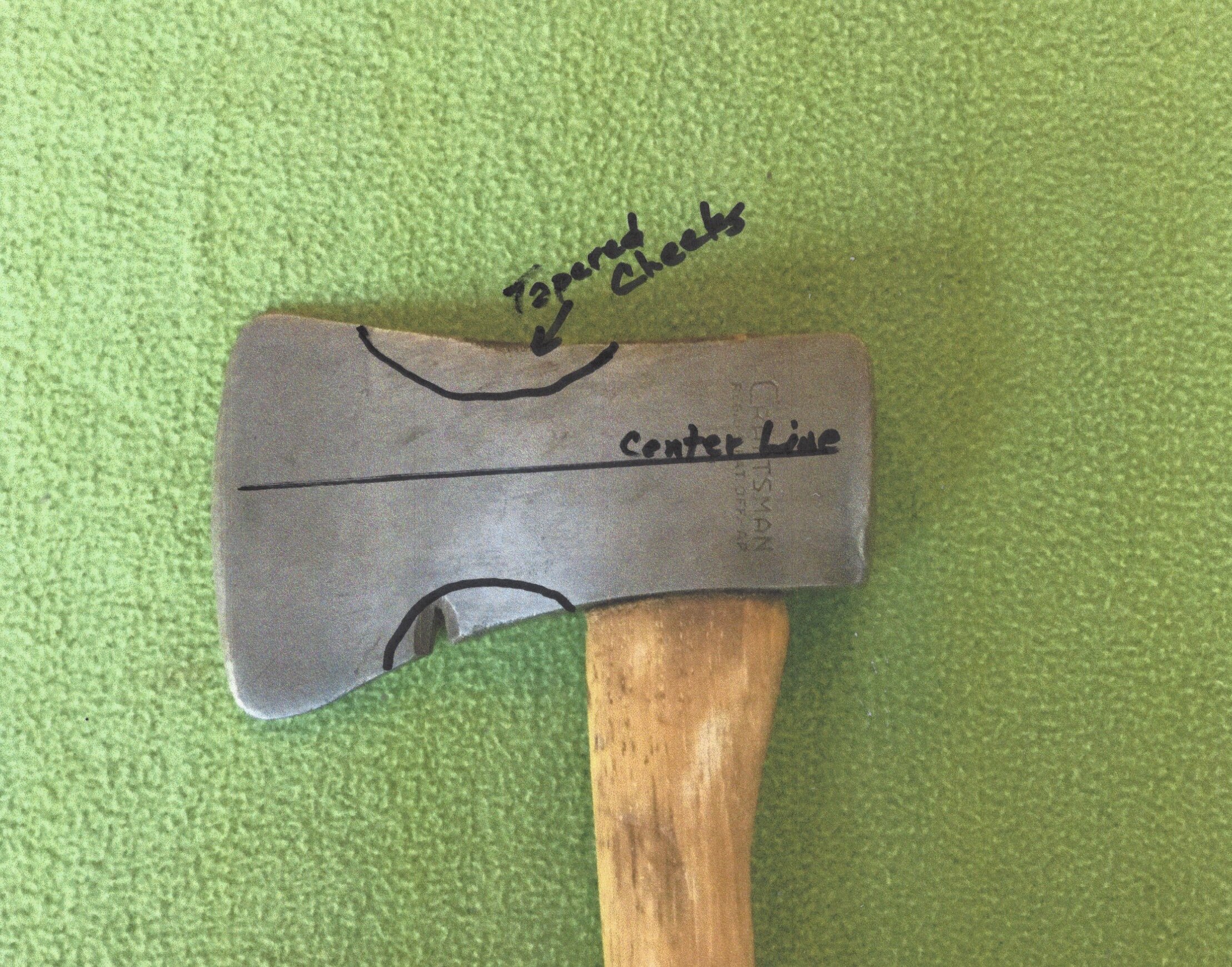Buy or Make a Good Camp Axe
After setting up camp, you will need a good camp axe to split firewood into smaller pieces of stove wood and kindling and to perform other routine camp chores. On the internet, you can find hundreds of camp axes with varying head shapes, head weights, and handle lengths. How can you pick the one that is best suited for your family camping needs?
Since the primary task for a camp axe is splitting firewood, you should look for a axe that was designed to easily split large amounts of firewood. Although each axe could split a piece of firewood, some axes do it much easier than others - and most other axes are inefficient, awkward, and/or unsafe for splitting large amounts of firewood. The best camp axe, in my opinion, is a small boy’s axe with 1.5 to 2.25-pound Dayton head and a 20 to 25-inch handle.This size was endorsed by Mors Kochanski and other accomplished outdoorsmen. With it, you can easily and safely split several pieces of firewood with relatively little effort. But, if you want a small axe that fits into a standard-size tool bag, I recommend an ESTWING CAMPERS AXE14. It has a hardened head that can be used as a hammer and a steel shaft that will negate over strike damage.
Small Boy’s Axes
NEW AXES: Here is a list of some good camp axes, along with their head weight, handle length, and price at the beginning of this year.
Hults Bruk Akka Forrester - 1 1/2 pounds, 24 inches, $185
Gransfors Bruk Scandinavian Forest Axe - 1 5/8 pounds, 25 inches, $270
Hults Bruk Aneby - 2 pounds, 20 inches, $180
Hults Bruk Salen - 1 3/4 pounds, 20 inches, $110
Council Tools Wood-Craft Pack Axe - 2 pounds, 24 inches, $155
Council Tools Boy’s Axe (best deal) - 2 1/4 pounds, 24 inches, $ 60
RESTORED VINTAGE AXES: If you want the highest quality axe for a reasonable price, restore a good used axe or buy a restored axe from a reputable smith. You can buy a good used 1.5 to 2.25-pound axe head from a flea market or the eBay store for less than $40, a good handle for about $20, and leather for a sheath for about $10 - and have a great camp axe for less than $70. If you buy it from a smith, you may have to pay a few dollars more but you will have a great camp axe for a reasonable price that will last a lifetime.
A small boy’s axe with a 24 inch handle is a great firewood splitting tool - but is too large to fit in a tool bag.
The Estwing Camper’s Axe 14 has a hardened poll for driving in tent stakes and fits into most tool bags.
Small boy’s axe (top), compared with a large hatchet and small hatchet
Make kindling by splitting a small scrap of pine lumber from your workshop.
Tips for buying (or making) a good camp axe
Here is a list of important features to consider when buying a camp axe or axe head.
HEAD SHAPE. Rectangular shaped heads are best suited for typical camp chores because they have small overstrike zones and are well-balanced for splitting firewood. In particular, Dayton and Michigan shaped heads are good for splitting as well as for cutting and carving. They have long eyes that hold firm to the handle and small overstrike zones. Hudson Bay and Rhineland patterns are acceptable but these shapes have longer overstrike zones that can lead to premature handle failure. Avoid double bit, tomahawks, half-hatchets, carpenter's hatchets, shingling hatchets, broad axes & hewing axes.
HEAD WEIGHT. This feature, as well as sharpness, determines the amount of cutting or splitting that will be accomplished with each swing. A good camp axe should be as heavy as comfortable but not too heavy to be used to make kindling. The best camp axe head weigh, in my opinion, is between 1.5 to 2.25 pounds because this weight and size requires little lifting effort and little downward swing effort. Just lift the axe above your head and let it fall. Heavier heads are best for splitting larger tree rounds, but they require too much lifting effort and are difficult to control on the downward swing. Lighter heads are well-suited for splitting kindling and shaping wooden implements but require too much downward swing effort to split larger pieces of firewood and, consequently, are difficult to control when used with such force. If you have the space, you could pack a small boy’s axe and a small hatchet.
OVERALL LENGTH. In general, longer handles are fitted to heavier heads for generating more cutting and splitting power with two hands while shorter handles are fitted to lighter heads for chipping, carving and other small detail work. The best camp axe, in my opinion, has a 24 inch handle. This size is large enough to split large pieces of firewood, yet small enough to chip and carve small wooden implements. Furthermore, this handle length is comfortable to use because the longer handle absorbs most of the shock of repeated strikes.
STEEL QUALITY. The quality of the steel determines how easy it will be to sharpen the axe, how sharp you can get it, how long it will hold a sharp edge, how well it resists chipping, and how well it resists rust. Typically, good axe makers start with a good quality carbon steel (such as 1050) and forge it into the final axe shape. After forging, makers hardened the bits by heating them and then rapidly cooling them in oil or water baths. If the bit is too soft (HRC less than 50), it will not hold a sharp edge; if it is too hard (HRC above 60) it will be difficult to sharpen and will chip easily. The best axes have a HRC of 55 or 56. Unfortunately, it is difficult to get these details for many new axes and impossible to get them for used axes. The best way to assure your axe has good quality steel is to buy axes made by reputable makers - Helko, Ochsenkopf, Hults Bruk, Hultafors, SA Wetterling, Gransfors Bruk, Collins, Craftsman, Plumb, and True Temper. Avoid axes with no maker's mark. Also avoid axes that have been “re-profiled,” re-ground, or placed in a fire because their steel may have been softened by the heat.
HEAD CONDITION. Old axes found in flea markets and on eBay vary considerably in terms of their condition. Those with a little surface rust can be restored to make great camp tools. But those with badly damaged heads, mushroomed polls, cracked eyes or heads, distorted eyes, chipped bits, re-ground toes or heels, heavy pitting, and obscured maker's mark may be impossible to fix.
EYE DIMENSIONS. The eye should be larger at the top than at the bottom so that the handle can be properly secured to the head. Axes made with more uniform eye dimensions will loosen after a little use.
CHEEK THICKNESS. This feature can be measured midway between the eye and the bit. Thinner cheeks are best suited for cutting trees and limbs while thicker cheeks are best suited for splitting large pieces of wood. Cheap hatchets, made with lower quality steel, typically have thicker cheeks that split firewood reasonably well but are poorly suited for other common camp chores. Some people try to “re-profile” these cheeks and bits by grinding or filing away metal, but thin bits made from poor quality steel will chip or dull easily. It is best to buy a good brand name axe head made with good steel with moderately thin cheeks.
CENTERLINE GEOMETRY. Most American-made axes have a concave curvature along the centerline and a pronounced convex curvature with tapered cheeks across the centerline. This geometric pattern was reportedly developed to reduce sticking in the tree when cutting it. But when splitting firewood, I want my axe to stick in the wood so that I can safely baton or drive it through the log. Furthermore, when splitting kindling, I want my axe head to drive streight through the piece of wood without sliding down to the handle neck. Axes with a convex curvature and tapered cheeks have a pronounced bulge in the center of the axe head that pushes small pieces of stove wood down to the handle where it can cause overstrike damage and premature handle failure. So, the best camp axe heads have a flat surface across the center line. This geometry is found on most splitting mauls and European-made axes. And, in contrast to other American-made axes, it is also found on most vintage Collins axes - and that is why I prefer this brand.
HANDLE MATERIAL. Steel and composite shafted axes are very durable but are heavy and uncomfortable to use when splitting lots of firewood. Most axe enthusiasts, including me, prefer wooden handled axes because they are more comfortable to use. Several exotic woods have been used to make beautiful handles, but modern tent campers should stick to hickory or ash. Hickory and ash handles are very strong - but yet have a little flex that makes them comfortable to use. As a result, you can split more wood before your hand and arm tires. Replacement handles made by Beaver Tooth, House, and Link can be purchased on the internet and from a few hardware store.
HANDLE FIT. As a result of age and use, axe handles will get dry, brittle, cracked, rotten, and/or damaged - and, consequently, the head will become loose. Sometimes, you can re-tighten the head by driving it tight on the handle neck and then sinking the wedge a little deeper. But this fix will only last for a short time before it gets loose again. So, the handle will need to be replaced after a few years. If the handle is not replaced, the head could come loose - and fly off the handle during a swing and injure a bystander.
Replacing an axe handle is an art and many people cannot do it well. The handle and head should fit tight at the top and bottom of the eye. To get this solid fit, the handle neck should be shaved down so it fits snuggly inside the eye, the eye of the head should be wider at the top than at the bottom - and the top of the handle neck should be spread wide by a good wedge.
SHEATH. A sheath is absolutely necessary for both safety and gear protection reasons, but few used and new axes are sold with good sheaths. Therefore, you may have to make or buy a sheath for your axe. You can find many suggestions on the internet.
Check for curvature along and across the center line.
Pronounced convex curvature across the centerline with tapered cheeks can cause overstrike damage.
GRAIN ORIENTATION. If you read or watch axe reviews on the internet, you will quickly see that many reviewers claim that handle grain orientation is the most important feature to consider before buying an axe because - presumably - axe handles with poor grain orientations can snap without warning and perhaps throw the head dangerously through the air until it hits an innocent bystander. But, my personal experience does not support this claim - and - I can find no objective evidence on the internet to support it. In fact, I have split lots of firewood using camp axes with “poor grain orientation” and never had a problem. Instead, I contend that eye dimensions, steel quality, and head geometry are far more important features to consider before buying a camp axe.
SHARPNESS. Many internet reviewers also assert that “out of the box sharpness" is one of the most important features to consider and frequently demonstrate the sharpness of their new axe by shaving with it or slicing sheets of paper. But I assert that a razor sharp axe is not needed for typical camp chores, that razor sharp axes are more dangerous than moderate sharp axes, and that campers can sharpen most axes to any degree they desire. So, having a razor sharp axe out of the box is the last feature you should consider when buying a camp axe.







